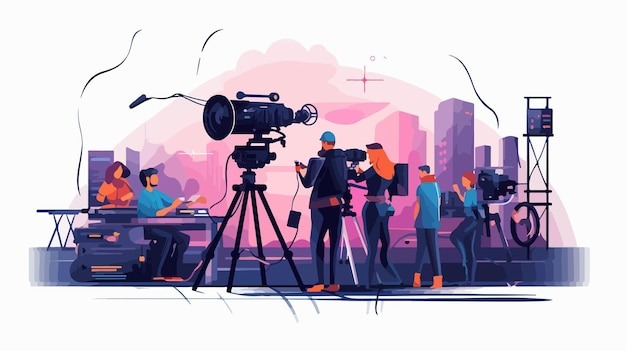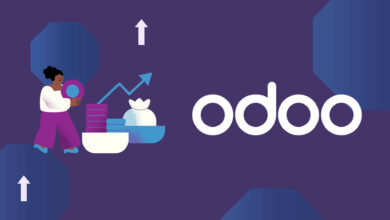
Businesses are increasingly turning to animated explainer videos to break down complex ideas and deliver concise messages. The versatility of animated content has made it a go-to solution for engaging potential customers, educating audiences, and improving brand communication. But with so many animation styles to choose from, it can be challenging to know which one is best suited for your explainer video production.
Whether you’re aiming to promote a new product, service, or concept, the right animation style can make all the difference in how your message is received. This guide explores the most popular animation styles, helping you choose the best one for your explainer video.
1. 2D Animation
Overview:
2D animation is one of the most common and widely recognized animation styles. It involves creating characters, objects, and scenes in a flat, two-dimensional space. 2D animation can range from simple, minimalist designs to more complex and detailed visuals, making it a versatile choice for various industries.
Why Choose 2D Animation:
- Versatility: 2D animation can be adapted to fit almost any type of content, whether it’s explaining a product, service, or complex idea.
- Cost-Effective: 2D animation is typically more affordable than other styles, making it a great option for businesses on a budget.
- Engagement: With its wide appeal, 2D animation helps to keep audiences engaged with its visually attractive and easy-to-follow content.
When to Use 2D Animation:
2D animation works well for educational and promotional videos where you need to explain complex ideas in a simple, digestible way. If your goal is to engage viewers without overwhelming them, this style is an ideal fit for your explainer video production.
2. Whiteboard Animation
Overview:
Whiteboard animation involves the use of drawings being created on a whiteboard (or a similar blank surface) as the narrator explains the concept. This animation style mimics the process of teaching and often features hand-drawn illustrations that appear in real-time as the story unfolds.
Why Choose Whiteboard Animation:
- Clarity: Whiteboard animation is excellent for explaining complex ideas or processes step by step. The clean, minimalist approach keeps the viewer’s attention focused on the message.
- Simplicity: The use of basic visuals helps in making the content more accessible and less overwhelming for the audience.
- Professional: This style is often perceived as more educational and professional, making it ideal for corporate settings.
When to Use Whiteboard Animation:
Whiteboard animation is best for educational videos, business presentations, and tutorials. It’s also highly effective in video production for businesses in industries like finance, healthcare, and technology, where clear and precise communication is essential.
3. Motion Graphics
Overview:
Motion graphics combine elements of design, text, and animation to create dynamic visuals that convey a message quickly and effectively. This style is often used to bring static designs to life with animation, making complex data and information easier to understand.
Why Choose Motion Graphics:
- Data Visualization: Motion graphics are ideal for breaking down complex data, statistics, and information into easy-to-understand visuals.
- Professional Appeal: This style offers a sleek, polished look that is perfect for corporate and B2B content.
- Flexible: Motion graphics can be combined with other styles, such as live-action footage or 2D animation, to create a unique and engaging video.
When to Use Motion Graphics:
Motion graphics are an excellent choice for businesses looking to communicate abstract ideas, data, or complex services. It’s also a great fit for product demos, app walkthroughs, or explainer videos aimed at corporate clients. Using this style in explainer video production allows you to simplify information and keep viewers engaged with striking visuals.
4. 3D Animation
Overview:
3D animation offers depth, realism, and detail by creating three-dimensional characters and environments. This style is visually captivating and can offer a more immersive experience compared to 2D or other animation techniques.
Why Choose 3D Animation:
- High Impact: The realism and detail provided by 3D animation allow you to create a more visually impactful and immersive experience.
- Versatility: 3D animation can be used for a wide range of applications, from product demos to simulations and explainer videos.
- Realism: If you need to showcase a physical product or create realistic representations, 3D animation can make your content more relatable and engaging.
When to Use 3D Animation:
3D animation works best when you need to demonstrate how a product works, showcase an intricate design, or explain complex processes. While it is generally more expensive and time-consuming, using 3D in explainer video production is a powerful way to deliver high-impact messages and leave a lasting impression.
5. Kinetic Typography
Overview:
Kinetic typography is an animation style where text is the central focus of the video. Words move dynamically on the screen to emphasize key points, and the style often incorporates music, voiceover, and sound effects to enhance the message.
Why Choose Kinetic Typography:
- Focus on Message: Kinetic typography puts the emphasis on words and text, making it ideal for videos that need to deliver a strong, clear message.
- Dynamic and Engaging: The movement of text can keep viewers engaged and help reinforce important ideas.
- Fast-Paced: This style works well for short, fast-paced videos where you need to capture attention quickly.
When to Use Kinetic Typography:
Kinetic typography is perfect for promotional videos, brand storytelling, and videos that need to convey a lot of information in a short period. It can be highly effective in explainer video production when the focus is on delivering a strong message or call to action.
6. Stop Motion Animation
Overview:
Stop motion animation involves capturing real-world objects frame by frame to create the illusion of movement. This style offers a more tactile, handcrafted feel, making it unique compared to more polished, digital animations.
Why Choose Stop Motion Animation:
- Authenticity: The handcrafted, real-world nature of stop motion adds a level of authenticity and charm to your video.
- Uniqueness: Stop motion stands out from the more commonly used 2D and 3D animation styles, making it a great choice if you want your video to be memorable.
- Creative Potential: The possibilities with stop motion are nearly endless, allowing for creative and artistic expression.
When to Use Stop Motion Animation:
Stop motion is ideal for brands that want to showcase creativity and uniqueness. It’s particularly useful for product-focused explainer videos, where physical objects can be used to demonstrate how something works.
Also read : The Importance of Custom Food App Development for Fast-Food Chains
Final Thoughts
Choosing the right animation style is key to delivering an impactful explainer video that resonates with your audience. Whether you’re looking for the simplicity of whiteboard animation, the visual depth of 3D, or the unique appeal of stop motion, there is an animation style to suit your brand’s needs.
Understanding your target audience, brand message, and overall goals will help you select the right style for your explainer video production. By choosing a style that complements your message and engaging storytelling, you can create explainer videos that captivate viewers, simplify complex ideas, and drive results for your business.





